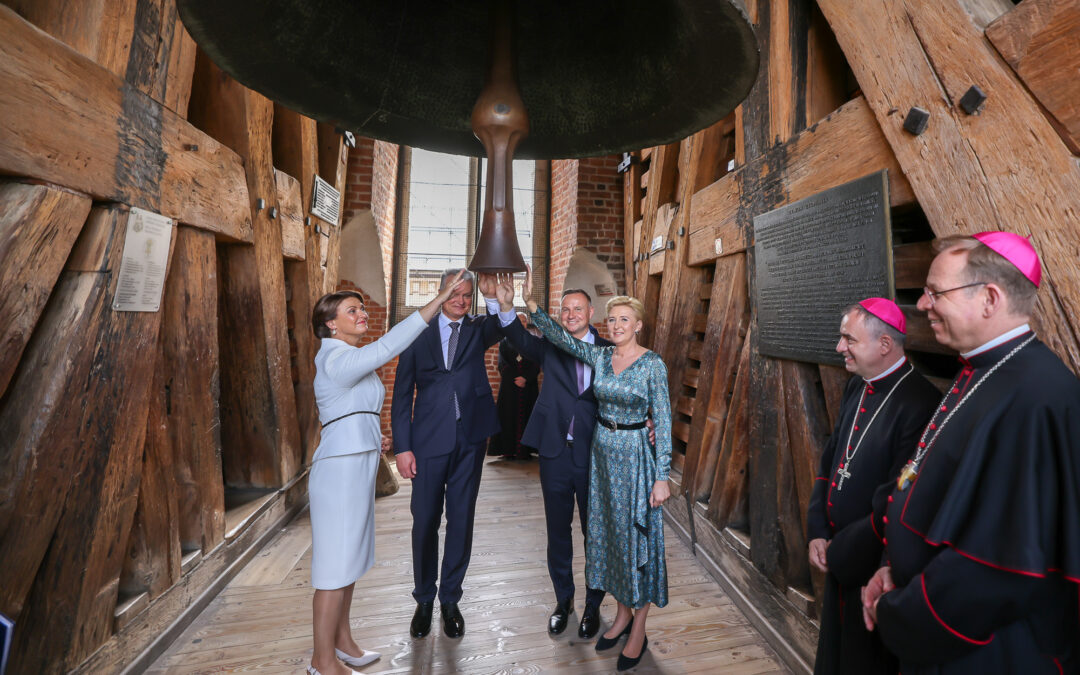Lithuanian President Gitanas Nausėda has met with his Polish counterpart Andrzej Duda to discuss Poland’s help in protecting Lithuania’s borders from the recent influx of illegal immigrants from Belarus.
During the weekend visit to the Polish city of Kraków, the heads of state also took part in a ceremony marking the 500th anniversary of the Royal Sigismund Bell (Dzwon Zygmunta), which was created at the time of the Polish-Lithuanian dual monarchy.
Lithuania to propose sanctions on Belarus for flying illegal migrants to EU border https://t.co/9ohoZyQgRc pic.twitter.com/YglKy7nO00
— CNA (@ChannelNewsAsia) July 11, 2021
Both Poland and Lithuania have support Belarus’s democratic opposition, including providing refuge to many Belarusian activists amid repression in their homeland, in particular after last August’s disputed presidential election.
Since then, Lithuania has also faced a wave of nearly 1,700 migrants illegally entering the country from Belarus this year, with more than 1,000 of them in July alone, according to its border guard service.
On Monday, the country’s foreign minister said the migrants were being used as a “political weapon” to put pressure on the European Union to withdraw its sanctions against Minsk.
Nausėda said that Lithuania had started the construction of a “temporary wall” and was counting on EU support. He also said that he was in talks with the head of Frontex, the EU’s border agency, which has promised assistance in securing Lithuania’s border.
Poland has also pledged support. “Security matters are one of the foundations of our cooperation,” said Paweł Soloch, the head of President Duda’s National Security Bureau. In 2019, the two countries signed a declaration to bolster cooperation in the field of security.
Duda said that consultations were “underway” with the commander of the Polish border guard, and that talks were also pending with the interior minister, Mariusz Kamiński. The Polish president that he hoped “everything will be arranged” within “days”.
🇵🇱 Wypowiedź Prezydenta RP na wspólnej konferencji z Prezydentem Litwy ➡️ https://t.co/gvnaDX3nMk pic.twitter.com/KbCNyM34Jt
— Kancelaria Prezydenta (@prezydentpl) July 11, 2021
The two heads of state also marked the 500th anniversary of the 13-tonne Sigismund Bell, the largest of five in the cathedral at Kraków’s Wawel castle, the former seat of Polish monarchs. First rung on 13 July 1521, the bell is adorned with two coats of arms: the Polish white eagle and the Lithuanian knight.
Duda emphasised that the first ringing of the bell – which was commissioned to honour the dual monarchy comprising the Kingdom of Poland and the Grand Duchy of Lithuania – was an “extremely important turning point in our common history”.
The bronze bell is rung to mark national and religious holidays, as well as on important occasions in Polish history – including on the German invasion of Poland in 1939 and on the eve of the country’s entry into the European Union in 2004 – and is considered a national symbol.
Moreover, this year marks the 230th anniversary of the signing of the Polish-Lithuanian Commonwealth’s 1791 constitution, which is widely considered to be Europe’s first modern constitution, and the world’s second (following that of the United States).
During the weekend visit, the leaders and their spouses attended mass in Wawel Cathedral led by Marek Jędraszewski, the archbishop of Kraków, and visited the local command centre of the Polish special forces in Kraków.
The pair also discussed joint cultural projects at the International Cultural Centre on the city’s main square.
A virtual "portal" has been created connecting the Lithuanian capital of Vilnius with the Polish city of Lublin, allowing people in the two countries to interact with one another in real time https://t.co/959GNqJhBu
— Notes from Poland 🇵🇱 (@notesfrompoland) July 5, 2021
Main image credit: Grzegorz Jakubowski/KPRP/Prezydent.pl

Maria Wilczek is deputy editor of Notes from Poland. She is a regular writer for The Times, The Economist and Al Jazeera English, and has also featured in Foreign Policy, Politico Europe, The Spectator and Gazeta Wyborcza.



















